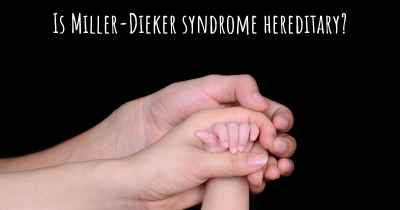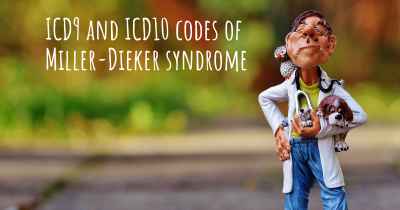What is the history of Miller-Dieker syndrome?
When was Miller-Dieker syndrome discovered? What is the story of this discovery? Was it coincidence or not?

Miller-Dieker syndrome is a rare genetic disorder that affects brain development. It was first described in 1963 by two American pediatric neurologists, James Miller and William Dieker. The syndrome is characterized by a smooth brain surface, known as lissencephaly, which leads to severe intellectual and developmental disabilities.
The discovery of Miller-Dieker syndrome was a result of extensive research and clinical observations. Miller and Dieker noticed a pattern of similar symptoms in several patients, including severe developmental delays, seizures, and distinct facial features. They conducted further investigations and identified a common underlying cause, which was the absence or mutation of a specific gene called LIS1 (also known as PAFAH1B1).
The identification of the LIS1 gene and its association with Miller-Dieker syndrome marked a significant milestone in understanding the genetic basis of brain development. The absence or mutation of this gene disrupts the normal migration of nerve cells in the developing brain, leading to the characteristic smooth brain surface seen in affected individuals.
Over the years, advancements in genetic testing techniques have allowed for more accurate diagnosis of Miller-Dieker syndrome. Researchers have also discovered other genes, such as DCX (doublecortin), that can be involved in the development of lissencephaly. Mutations in the DCX gene are responsible for a milder form of lissencephaly, known as subcortical band heterotopia.
The prevalence of Miller-Dieker syndrome is estimated to be around 1 in 100,000 live births. It affects both males and females equally and is not specific to any particular ethnic group. The syndrome is typically sporadic, meaning it occurs randomly and is not inherited from parents. However, in some cases, it can be inherited in an autosomal dominant manner, with affected individuals having a 50% chance of passing the condition to their children.
The clinical manifestations of Miller-Dieker syndrome can vary in severity. In addition to the smooth brain surface, individuals may exhibit a range of neurological abnormalities, including severe intellectual disability, poor muscle tone, feeding difficulties, and respiratory problems. Seizures are a common feature, often starting in infancy or early childhood.
Treatment for Miller-Dieker syndrome is primarily supportive and focuses on managing the symptoms and improving quality of life. Early intervention programs, including physical therapy, occupational therapy, and speech therapy, can help individuals with developmental delays reach their maximum potential. Medications may be prescribed to control seizures, and specialized feeding techniques may be necessary for those with feeding difficulties.
Ongoing research continues to deepen our understanding of Miller-Dieker syndrome and related disorders. Scientists are investigating potential therapeutic approaches, including gene therapy and targeted drug interventions, to address the underlying genetic abnormalities. Additionally, genetic counseling plays a crucial role in supporting families affected by Miller-Dieker syndrome, providing information about the condition, recurrence risks, and available resources.
In conclusion, Miller-Dieker syndrome is a rare genetic disorder characterized by lissencephaly and severe developmental disabilities. The discovery of the LIS1 gene and its association with the syndrome has significantly contributed to our understanding of brain development. Ongoing research and advancements in genetic testing offer hope for improved diagnosis, treatment, and support for individuals and families affected by this condition.








